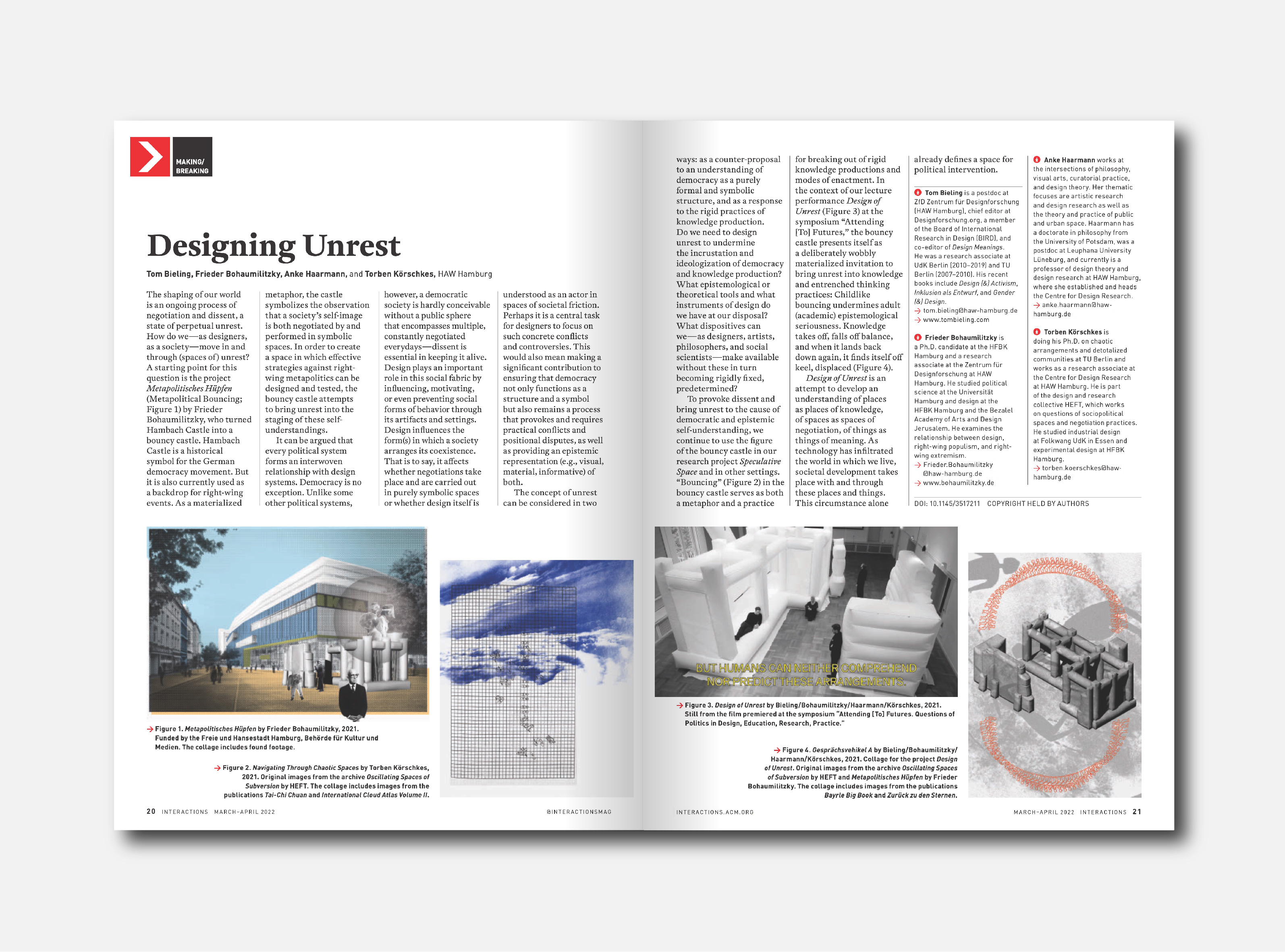

“It can be argued that every political system forms an interwoven relationship with design systems. Democracy is no exception. Unlike some other political systems, however, a democratic society is hardly conceivable without a public sphere that encompasses multiple, constantly negotiated everydays—dissent is essential in keeping it alive. Design plays an important role in this social fabric by influencing, motivating, or even preventing social forms of behavior through its artifacts and settings. Design influences the form(s) in which a society arranges its coexistence. That is to say, it affects whether negotiations take place and are carried out in purely symbolic spaces or whether design itself is understood as an actor in spaces of societal friction. Perhaps it is a central task for designers to focus on such concrete conflicts and controversies. This would also mean making a significant contribution to ensuring that democracy not only functions as a structure and a symbol but also remains a process that provokes and requires practical conflicts and positional disputes, as well as providing an epistemic representation (e.g., visual, material, informative) of both.”
Tom Bieling · Frieder Bohaumilitzky · Anke Haarmann · Torben Körschkes, “Designing Unrest”, in: Interactions, Volume 29, Issue 2, New York, Association for Computing Machinery 2022, p. 20-21.
Text: Tom Bieling · Frieder Bohaumilitzky · Anke Haarmann · Torben Körschkes
Images: Frieder Bohaumilitzky · Torben Körschkes
DOI: https://doi.org/10.1145/3517211
Text: Tom Bieling · Frieder Bohaumilitzky · Anke Haarmann · Torben Körschkes
Images: Frieder Bohaumilitzky · Torben Körschkes
DOI: https://doi.org/10.1145/3517211